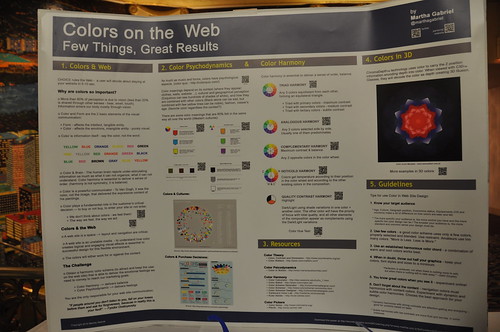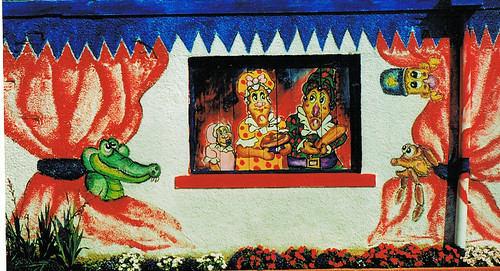"SASAMON" Biography & Curriculum Vitae
Image by inuii
Biography
Sasamon Rattanalangkarn graduated from Chulalongkorn University, Bangkok with a degree in Art Education. She later worked as a creative in the advertising industry, holding the position of Art Director at McCann Worldgroup Thailand where her main account was Nescafe. She then worked for SC Matchbox on the highly innovative “Sanrak” project to promote family ties and encourage families to spend more time together, which gave her the opportunity to develop more personal communication skills.
Advertising world offered her a platform to express her imagination and creativity, Seven years in advertising gave her a good background to develop other interests such as photography.
In 2008, Sasamon resigned from her job and moved to London in order to explore a different world. She used photography as a tool to observe her new surroundings and encourage herself to discover places she didn’t know.
While she was living in London, Sasamon studied English and attended a course at Central Saint Martins College of Art and Design focusing on set design and art direction in film.
In 2009, she participated in a symposium titled Urban Encounters: Rethinking Landscape at Goldsmiths, University of London, which used the lens of urban photography to bring together international researchers, academics, photographers and artists concerned with the nature of contemporary urban spaces and cultures.
Sasamon returned to Thailand in 2010 to work as a photographer, exploring the experience of everyday life in both public and private spaces through images and narrative work. Her photography reflects her personal view and interest in the human element, how cities develop over time and how we all inhabit a world that is continuously being recreated.
Portions of Sasamon’s work can be found on her personal website at: www.sasamon.com.
J. Carter Brown / Kitty Kelley
Image by dbking
Former home of J. Carter Brown and Kitty Kelley
***This address is a single home which was divided, the portion on the left is hidden behind the tree and is the portion of the home in which Kitty Kelley lived***
3035-3037 Dumbarton Ave NW
-----------------------------------------------------------------------------------------------------------------------
John Carter Brown was born in Providence, Rhode Island. His family had been prominent since before the Revolution, providing the initial endowment for what is today known as Brown University. His parents shared a passion for the arts and public service. His father, John Nicholas Brown, served as Assistant Secretary of the Navy under President Truman. While living with his family in Washington, the young J. Carter Brown fell in love with the National Gallery of Art and first conceived of a career that would allow him to pursue his love for all the arts and to share them with a larger public.
Although he was already committed to a career in arts administration, Brown spent his undergraduate years studying history and literature, and acquired a master's degree from Harvard Business School. With this preparation, he immersed himself in the study of art history in Europe, including studies with the renowned art historian Bernard Berenson, and completed a second master's degree in art history at New York University.
In 1961, Brown joined the National Gallery as an assistant to the Director, John Walker. He was appointed assistant director in 1964, and in 1969, at the age of 34, he was appointed Director. He was only the third person to hold this position, and would become the longest serving director in the Gallery's history.
Carter Brown was the first American museum director with a business degree. When he set out to raise million for a new acquisitions fund, he overshot the target and raised million. Even as public funding from the arts came under intense political attack, he induced Congress to increase the Gallery's operating budget year after year, from million in 1969 to million when he retired in 1992. During his tenure, the Gallery's endowment grew from million to 6 million.
Having enjoyed an incomparable exposure to the world of art, and a thorough professional and academic training, Brown set himself a goal of bringing the joys of culture to a larger audience than the hermetic world of connoisseurs and art historians. In addressing the public, the Director always referred to the institution he headed as "your Gallery."
With his special gift for diplomacy, Carter Brown persuaded foreign governments to loan priceless works for visiting exhibitions, and led American collectors to donate their treasures to the nation, including works by Cézanne, van Gogh, Picasso and Veronese. In his 23 years at the helm of the Gallery, he increased the collection by 20,000 works of art, including pieces by old masters and modern giants, from Leonardo da Vinci to Claude Monet, Henri Matisse, and Jackson Pollock.
Combining rigorous scholarship with a unique theatrical flair, Brown instituted a series of dazzling special exhibitions. 1977's "Treasures of Tutankhamen," inaugurated a new era of "blockbuster" museum shows. In 1985, one exhibition alone, "Treasure Houses of Britain," attracted almost a million visitors. He also broadened the scope of the gallery beyond its traditional emphasis on European and North American art, with exhibitions of African sculpture, Chinese archaeological discoveries and the historic riches of Japan. Under Brown's leadership, the Gallery's annual attendance rose from 1.3 million in 1969 to almost 7 million visitors a year.
Brown greatly expanded the Gallery's exhibition space, doubling its square footage. Perhaps his greatest triumph was the construction of the Gallery's East Building in 1978. I.M. Pei's angular modern design encountered fierce opposition from traditionalists and preservationists who feared it would spoil the view of the Capitol, but the finished building has become one of Washington's most popular cultural attractions, and one of the most admired buildings in America. Selected as one of the ten best building in America, it ignited an international trend of new museum buildings as innovative works of art. He ended his service to the Gallery on a high note, with "Circa 1492: Art in the Age of Exploration," an unprecedented extravaganza of art from five continents, marking the 500th anniversary of Columbus's voyage to the New World.
After retiring from the National Gallery in 1992, he continued his crusade to bring the splendors of art to the mass public. He founded the cable television arts network Ovation and served as its chairman. During the 1996 Olympic Games in Atlanta, he mounted a magnificent display of works from every continent and period of human history: "Rings: Five Emotions in World Art."
His service to his adopted city continued until the end of his life. He served for 30 years as Chairman the U.S. Commission of Fine Arts, an independent agency that advises the Federal and District of Columbia governments on matters of art and architecture that affect the appearance of the nation's capital. In this capacity, Brown was a leading advocate of the controversial Vietnam Veterans Memorial, designed by 21-year-old Maya Lin. As with the East Building of the National Gallery, Carter Brown's judgment was vindicated by the American people, who have made the Vietnam Memorial the most-visited site in the nation's capital. Brown also played a crucial advisory role in the creation of the Korean War Veterans Memorial and the memorial to President Franklin Roosevelt.
In August, 2000, Brown was diagnosed with Multiple Myeloma, a terminal blood cancer. He confronted his illness with the same dignity and courage that had characterized his entire life and career. Six months before being interviewed by the Academy of Achievement, he received an autologous stem cell transplant and enjoyed an active life for the following year-and-a-half, before succumbing to a lung ailment in June 2002.
In his last years, he participated in a host of new building projects in Washington, including the American Indian Museum, a modern wing for the Corcoran Gallery of Art, and the National World War II Memorial. Through these works and the National Gallery of Art, the generous spirit of J. Carter Brown will contribute to the life of his country for many years to come.
---------------------------------------------------------------------------------------------------------------------
Kitty Kelley (born April 4, 1942) is an American investigative journalist and author of several best-selling biographies of celebrities and politicians. Her works have found her an international reputation—often controversial—as the first lady of the unauthorized biography genre. She is famous for her thorough research, attention to detail, and ability to get sources to reveal information, and her profiles are frequently spiced with unflattering personal anecdotes and details.
Although Kelley has been fiercely criticized by the mainstream media, who dismiss her work as "tabloid journalism", she has never been successfully sued for libel and has never been forced to retract a written statement. Kelley hires her own teams of fact-checkers and legal advisors to check her texts.
Kelley was born and grew up in Spokane, Washington. She obtained a B.A. in English from the University of Washington in 1964. After finishing her studies, she worked for four years as a press assistant to US Senator Eugene McCarthy. From 1969 to 1971, she worked at the Washington Post as an editorial assistant. She published her first book, an expose of the fat farm industry titled "The Glamour Spas" in the early seventies. Since then, Kelley has worked fulltime as a freelance writer. Her articles have appeared in The New York Times, The Washington Post, Wall Street Journal, Newsweek, People, Ladies Home Journal, McCall's, Los Angeles Times, and Chicago Tribune.
Kelley's first biography was Jackie Oh! (1978), a life of Jacqueline Kennedy Onassis, which was written on the request of Lyle Stuart, an independent publishing maverick who promoted Kelley's 'Washington insider' angle and launched the book into the New York Times Best Seller list, where it remained for three months in paperback. With the book, Kelley basically invented the modern unauthorized biography genre--with her spicy allegations about J.F.K.'s womanizing, as well as highly personal revelations about Jackie Kennedy's psychological treatment.
This book was followed by Elizabeth Taylor: The Last Star (1981), which was also a scandalous New York Times Best Seller in paperback and hardcover, though it received slightly better reviews than Jackie Oh!. Kelley's next book, His Way: The Unauthorized Biography of Frank Sinatra (1986), brought her wider renown, more critical respect and a certain notoriety. Frank Sinatra went to court to try to prevent it from being published, slapping her with a million lawsuit because he believed it painted him in an unattractive light, detailing his tumultous marriages, affairs, links to the Mob, and obssession with powerful figures. He also accused her of misrepresenting herself as his authorized biographer. He later withdrew his lawsuit amid much publicity and the book went on to become number one on the New York Times best seller list, and was a huge seller not only in the US but also in England, Canada, and Australia.
Kelley followed this success in 1991 with Nancy Reagan: The Unauthorized Biography, which became the fastest selling biography in publishing history. The book received huge amounts of publicity because of the allegations that the First Lady had been involved in White House trysts with Frank Sinatra and that she frequently relied on astrology. The biography, which received controversial front-page attention from Maureen Dowd of the New York Times, perched itself at the top of the New York Times best-seller list for weeks and made Kelley nearly ubiquitous: she was thrust onto the front pages of Time ("Is She Really That Bad?"), Newsweek, Entertainment Weekly ("The Kitty and Nancy Show"), and People magazine ("Inside Kitty's Dish") and was spoofed on Saturday Night Live. Partly in response to this book, Kelley was herself the subject of highly critical volume, Poison Pen (1991), by conservative journalist George Carpozi, Jr.
After a failed stab at talk show hosting, in September 1997, Kelley turned her attention to the British Royal Family in The Royals, examining such issues as attempts by the Windsors to obscure their German ancestry as well as more personal matters such as the many scandals surrounding the members of the family. The book was not published in Great Britain due to concerns over libel laws, but, thanks to its publication within a month of Princess Diana's death, it too jumped to the top position of the New York Times best-seller list, becoming the fourth best-selling nonfiction title of the year, according to Publishers Weekly.
Kelley's most recent book, The Family: The Real Story of the Bush Dynasty, appeared on September 14, 2004, less than two months before the 2004 U.S. Presidential election. She had announced plans for the book shortly after George W. Bush's election in 2001 and worked on it for four years. "The Family" provoked another firestorm of publicity due to its allegations, supplied by Sharon Bush, that George W. Bush snorted cocaine with his brothers at Camp David during his father's presidency. The book also claimed that First Lady Laura Bush dealt drugs in college. Kelley was widely attacked in the media for the book, with charges of partisanship and challenges to her credibility, yet as usual, no specific charges against her were substantiated and no retractions were necessary. The book became her fourth consecutive title in a row to debut at No. 1 on the New York Times Best Seller list, and went on to sell over 750,000 copies in hardcover in the United States alone. Kelley is perhaps the only female journalist to have four of her books in a row debut at No. 1 on the Times list. (To place that into perspective, Bob Woodward, perceived as America's pre-eminent journalist, has had seven titles reach No. 1 on the New York Times Best Seller list.)
Ted de Grazia's Gallery in the Sun - Tucson, Arizona
Image by UGArdener
Best viewed LARGE on Black: bighugelabs.com/onblack.php?id=4400527029&size=large&...
en.wikipedia.org/wiki/Ettore_DeGrazia
degrazia.org/Gallery.aspx
The story of Tucson area artist Ted deGrazia, his relationship with Diego Rivera and Frieda Kahlo in the 1940's, and the way that his unique style of Southwestern Art developed over the ensuing decades and was copied by others is an interesting one. However, for me, the real interest here was the established cactus gardens in the 10 acres surrounding the house/gallery and the small chapel, and in the beautiful courtyard that is surrounded by the gallery.
From the Wikipedia Article:
"Ettore "Ted" DeGrazia (June 14, 1909 – September 17, 1982) was an American impressionist, western-pop painter, sculptor, and lithographer. Self-described as "the world's most reproduced artist", DeGrazia is known for his pastel images of Native American children of the American Southwest and other Western scenes.
Born to an Italian copper miner in Morenci, Arizona Territory, DeGrazia's graduation from Morenci High School was delayed to the age of 23 by a four-year family trip to Italy beginning in 1920. In the early 1940s he studied under Diego Rivera and José Clemente Orozco, assisting with murals at the Palacio Nacional and the Hospital de Jesus. The two artists sponsored an exhibit of his paintings at Palacio de Bellas Artes and the young artist was featured in Mexico City's Hoy Magazine. He returned to the University of Arizona, studying under Katherine Kitt where he received degrees in art and music.
In 1944, DeGrazia built his first gallery from adobe on the corner of Prince and Campbell Road in Tucson, Arizona. In 1951, he started work on what would become the DeGrazia Gallery in the Sun Historic District with the building of the Mission in the Sun and his home near the corner of Swan and Skyline roads. The DeGrazia Gallery in the Sun was built in 1965. Artists and friends who spent time at the new gallery included Thomas Hart Benton, Olaf Wieghorst, Jack Van Ryder, Pete Martinez and Ross Santee. In 2006, the 10-acre (40,000 m2) property, now a museum of DeGrazia's work, was listed on the National Register of Historic Places.
DeGrazia's work first appeared in Arizona Highways magazine in 1941. In 1960, DeGrazia received a commission to produce cover art for UNICEF greeting cards. His designs have appeared on lithographs, collector plates, greeting cards, and in a series of Goebel figurines made by the same company that is famous for its Hummel figurines.
In 1976, Degrazia engaged in a protest against inheritance taxes based on assessed market values of his work. The artist claimed the IRS rulings made him "a millionaire on paper and my heirs will have to pay taxes for which there is no money." In his well-publicized protest, Degrazia rode horseback into the Superstition Mountains and burned 100 of his paintings."
Poster 06 - Color Design on the Web - Few Things, Great Results #heweb10
Image by jameskm03
Color Design on the Web - Few Things, Great Results
PST Poster Sessions Track
Tuesday,
3:30
–
5:00
PM
Although humanity has used colors in an intensive way for only the last 100 years, colors are very important in our lives because they define actions and behaviors. Colors instigate physical and psychological reactions - they attract, warn, excite, calm, and convey many feelings. The way we use colors in a website contributes greatly to the way the users react and feel. This poster will explore a) the importance of color; b) colors and the Web; c) color psychodynamic; d) color harmony a;nd e) 3D color effects. A guideline for using colors on the Web will also be presented.
Presenter
Martha Gabriel
Professor, BSP Business School São Paulo
Martha is professor of MBA courses at BSP Business School São Paulo and the Unicentro Belas Artes de São Paulo. She is the CIO at NMD New Media Developers, and winner of 11 Internet Best Awards from 1998 to 2005. Martha is a frequent speaker at Internet and marketing conferences in Brazil, the U.S., England, Austria, Macedonia, China, Japan, and Singapore. She's won HighEdWeb's "Best of Track" red stapler award three times (2003, 2004, and 2008) and "Best of Conference" once (2004). She is an engineer, postgraduate in marketing and graphics design, has a master's degree in art and technology, and is pursuing her PhD at the University of Sao Paulo focusing on mobile technologies and social media. She is the author of the books Search Engine Optimization on the Web (2008) and SEM & SEO: Mastering the Search Engine Marketing (2009). Find her online at www.martha.com.br and on Twitter at @marthagabriel.
The Ending Of A Show
Image by waihey
This mural was done part of my degree in Art & Design. This was done six years ago. All the constant exposure to bad weather it was getting tattered. The wall got painted over which I discoverd last week. Only Punch, Judy and baby remains for now.
No comments:
Post a Comment